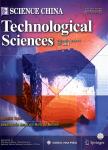Classification of lying states for the humanoid robot SJTU-HR1
Classification of lying states for the humanoid robot SJTU-HR1作者机构:State Key Laboratory of Mechanical System and Vibration Shanghai Jiao Tong University Shanghai 200240 China Robotic Research Center Yanshan University Qinhuangdao 066004 China
出 版 物:《Science China(Technological Sciences)》 (中国科学(技术科学英文版))
年 卷 期:2009年第52卷第5期
页 面:1301-1311页
核心收录:
学科分类:080202[工学-机械电子工程] 08[工学] 0804[工学-仪器科学与技术] 0802[工学-机械工程]
基 金:Supported by the Natural Basic Research Program of China ("973") (Grant No. 2006CB705400) the National Natural Science Foundation of China (Grant Nos. 60534020, 30770538) Joint Research Fund for Young Scholars in China and Abroad (Grant No. 50728503) the Graduate Innovation Foundation of Shanghai Jiao Tong University
主 题:SJTU-HR1 G Fset motion planning basic states lying states
摘 要:The humanoid robot SJTU-HR1’s concept is introduced and its characteristics tree is given. The basic states for SJTU-HR1 are proposed, including lying, sitting, standing and handstanding, abstracted from the daily exercises of human beings. The G F (generalized function) set theory is exploited to achieve the kinematic characteristics of the interested EEs (end-effectors) of SJTU-HR1 for the lying states. Finally, the results show that the large amounts of states can be described using the abbreviations in a systematic manner. Although we have focused on the application of the G F set theory to humanoid robots, particularly the SJTU-HR1, this methodology can also be applied to quadruped robots and hexapedal robots, especially when the desired tasks are complex.



